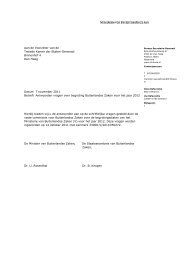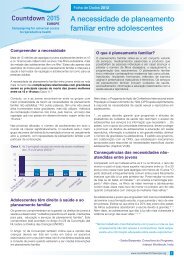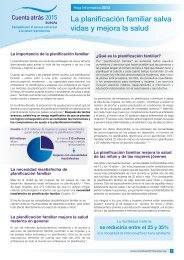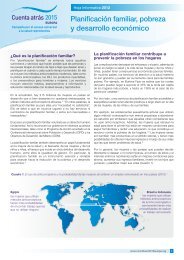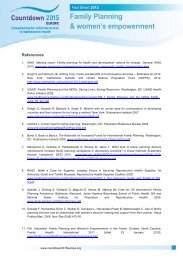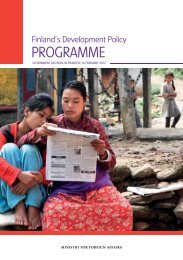The Unmet Need for Family Planning - Countdown 2015 Europe
The Unmet Need for Family Planning - Countdown 2015 Europe
The Unmet Need for Family Planning - Countdown 2015 Europe
You also want an ePaper? Increase the reach of your titles
YUMPU automatically turns print PDFs into web optimized ePapers that Google loves.
6. One-minute talking points and communication strategiesThis section provides suggestions <strong>for</strong> developing concisemessages or strategies <strong>for</strong> communicating with stakeholders,such as policymakers, donors and journalists, or <strong>for</strong> use inemails, websites or other publications.6.1 Brainstorming exercise <strong>for</strong> developing concise talking pointsAim: Write three or four bullet points or a short paragraph on asingle topic. Ideally, these should fit on an index card that can beeasily carried to meetings or other events, or posted next to atelephone or computer <strong>for</strong> easy reference.Suggested topics:••What is unmet need <strong>for</strong> family planning?••Why should family planning be a priority <strong>for</strong> governments/donors?••Haven’t family planning programmes been a success? Whydo we need to continue investing?••What are the economic benefits of investing in familyplanning?••What are the health benefits of investing in family planning?••What does family planning have to do with climate changeand the environment?••How can family planning increase opportunities <strong>for</strong> womenand improve gender equality?Materials needed: flip chart, laptop with copy of toolkit andPowerPoint slides, copies of fact sheets, index cardsTargeting our audience(s): Be<strong>for</strong>e we can decide what to say,we have to know who we’re talking to: is this person a sceptic?Or already a supporter? How much knowledge do they have offamily planning and need <strong>for</strong> investment?As a group, we’ll take five minutes to come up with a list of ourkey audiences (write these on flip chart). We can then keep theseaudiences in mind when working in our groups.Split into groups (depending on number of participants): Eachgroup chooses at least three topics to work on (ensuring thateach topic has at least one group working on it).In your group:••One person volunteers to take notes on flip chart••One or more people agree to write final text on index cards••Have the toolkit, slides and fact sheets handy – you will usethem <strong>for</strong> inspiration.For each topic:1. Choose ONE key sentence that you would like a stakeholderto take away from his/her discussion with you. It should bestraight<strong>for</strong>ward and not too complicated or long, so that youcan remember it.For example, <strong>for</strong> the topic ‘What are the economic benefits ofinvesting in family planning?’, your key sentence might be:No country has pulled itself out of poverty while maintaininghigh fertility, and voluntary family planning is vital to reducingfertility.orEvery dollar spent on family planning saves at least $4 thatwould otherwise be spent on complications from unintendedpregnancies.2. Look through the toolkit to find three or four points whichsupport your key sentence.For example, if your key sentence is No country has pulled itselfout of poverty while maintaining high fertility, and voluntaryfamily planning is vital to reducing fertility.Your points might be the following:••More than a quarter of the economic growth in developingcountries is attributed to lower fertility.••In Asia, at least one-third of economic growth between themid-1960s and the 1990s has been linked to improvementsin reproductive health and fertility rates.••<strong>Family</strong> planning is arguably the most important factor in thereduction of global fertility levels in the past 40 years.••With voluntary family planning, people can balance desiresto have children with the need to earn a wage and to investin their existing children.<strong>The</strong>re may be a lot of points to support your key sentence. <strong>The</strong>challenge is to choose only three or four, and ensure they areconcise, memorable and not too complicated.Once you have decided on three or four points, write your keysentence and your supporting points on an index card. If itdoesn’t fit, you’ll need to cut it down to fit.26 www.countdown<strong>2015</strong>europe.org




